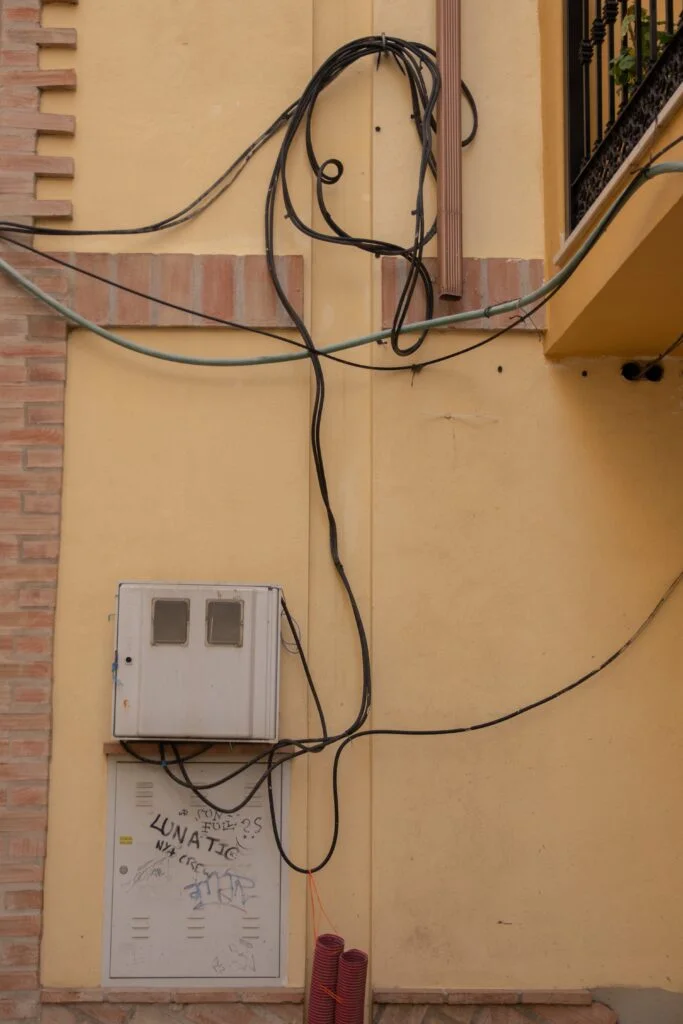
Circuit Breaker Guaranteed Best Construction Material Philippines’ Prices
What is the purpose of circuit breakers?
A circuit breaker is a type of electrical safety device used to guard against overcurrent damage to electrical circuits.
Its primary purpose is to stop the flow of current in order to safeguard machinery and lower the likelihood of a fire.
To restart normal operation, a circuit breaker can be reset (manually or automatically), unlike a fuse, which can only be used once before needing to be replaced.
There are many different sizes of circuit breakers, from tiny devices that protect low-current circuits or specific home appliances to massive switchgear built to safeguard high voltage circuits supplying an entire city.
OCPD is a common abbreviation for the general purpose of a circuit breaker or fuse, which is to automatically off power to a malfunctioning system (Over Current Protection Device).

5 Basic Components used in Every Circuit Breaker:
Tripping or Protective Mechanism: When an electrical fault occurs, the trip unit, also known as the tripping or protective mechanism, activates the working mechanism.
Working Mechanism: The breaker’s protective function is carried out by opening or closing it.
Molded Frame: The majority of breakers’ outside protective and supporting case. It provides insulation for the other part of the breaker and shelter.
Arc Chutes: These chutes, which are placed close to the contacts to avoid damage and mostly heat from interfering with the circuit breaker’s operation, separate when a failure occurs.
Contacts: Arcing, auxiliary, and main contacts are three different types of contacts that are utilized to guarantee adequate airflow inside the circuit breaker.
How Many Types of Breakers are There?
This is what you need to know about the three primary types of circuit breakers: conventional, AFCI circuit breakers, and GFCI breakers.
Conventional or Standard Circuit Breaker
Single-pole and double-pole circuit breakers are the two types of common circuit breakers.
These are less complex breakers that track the frequency of electricity as it flows through an enclosed environment.
It maintains track of the electricity flowing through outlets, appliances, and wiring systems.
To stop wires from overheating, this type of breaker cuts off the current during overloads and short circuits.
A hot wire may come into touch with a ground wire, another hot wire, or a neutral wire to cause this. Electrical fires are prevented by this current shutdown.
GFCI Circuit Breakers
When circuits have overloaded currents, GFCI circuit breakers, also known as ground fault circuit interrupters, cut off the electricity.
They also take effect when there is a line-to-ground fault or a short circuit.
The latter occurs when an electrical current and a grounded element form an unintended path.
These breakers are not appropriate for continually operating appliances like refrigerators or medical equipment.
The cause is tripping; the breakers might trip more frequently than they should.
AFCI Circuit Breakers
Arc fault circuit interrupters, often known as AFCI circuit breakers, prevent an unintentional electrical discharge in a wiring system or electrical cable that could start a fire.
It accomplishes this by detecting an irregular path and an electrical jump, after which it cuts off power to the damaged circuit before the arc builds up enough heat to ignite.
The table below shows the latest retail March 2024 prices of Circuit Breaker in Philippine Peso price per pieces including its ampere and brand.
Price and Standard Sizes of Circuit Breaker per pcs in the Philippines
| DESCRIPTION | PRICE |
| GE CIRCUIT BREAKER 60A | 400.00 |
| GE CIRCUIT BREAKER 100A | 660.00 |
| GE CIRCUIT BREAKER 15A | 320.00 |
| GE CIRCUIT BREAKER 20A | 330.00 |
| GE CIRCUIT BREAKER 30A | 350.00 |
| GE CIRCUIT BREAKER 40A | 380.00 |
| GE AIRCON OUTLET | 355.00 |
UPDATED: Construction Material Prices for Circuit Breaker in the Philippines (March 2024)
UPDATED: All Construction Prices are based on retail prices around hardware in Metro Manila
To see other material construction, please see here.
To know other construction guides, tips and methodology for beginners, veterans and contractors, please see here.
